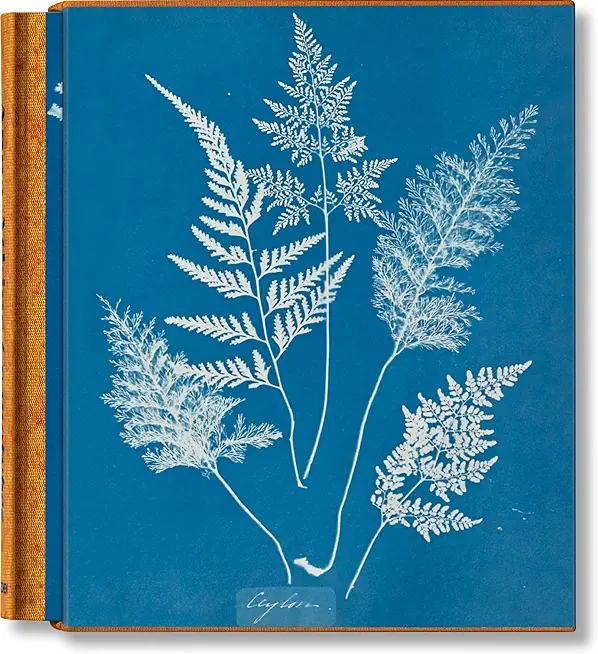
description
in her open-air laboratory in Halstead, Kent, Anna Atkins embarked on a radical experiment to document botanical species using a completely new artistic medium. The inimitable cyanotype photograms of algae and ferns she created were made into the first books to feature photographic images. Striking yet ethereal, these albums are a perfect synthesis of art and science.
Although the cyanotype technique was discovered by her friend John Herschel, Atkins was the first to realize both its practical purpose for her own interests in botany and taxonomy, and its intriguing artistic potential. The process, which involved fixing the object on sensitized paper and exposing it directly to sunlight, results in the Prussian blue pigment that forms the unmistakeable backdrop to these artworks.
Atkins' albums British Algae (1843-1853) and Cyanotypes of British and Foreign Ferns (1853), the latter of which was produced with her friend Anne Dixon, are works of remarkable rarity. Reprinted here in their entirety for the first time, they reveal her mastery of multiple disciplines: While the cyanotype process allowed Atkins to meet the challenges of accurate representation, the delicate contours of the specimens, set above the intense blue background, has lent the images a timeless aesthetic appeal.
This edition, drawing extensively from the copies of the New York Public Library and J. Paul Getty Museum, has carefully compiled cyanotypes from several sources to reprint Atkins' seminal works in full. Over 550 cyanotype impressions are accompanied by a series of introductory essays from Peter Walther, placing Atkins' work in its scientific and art-historical contexts and paying rightful tribute to the groundbreaking contributions of a female pioneer.
Although the cyanotype technique was discovered by her friend John Herschel, Atkins was the first to realize both its practical purpose for her own interests in botany and taxonomy, and its intriguing artistic potential. The process, which involved fixing the object on sensitized paper and exposing it directly to sunlight, results in the Prussian blue pigment that forms the unmistakeable backdrop to these artworks.
Atkins' albums British Algae (1843-1853) and Cyanotypes of British and Foreign Ferns (1853), the latter of which was produced with her friend Anne Dixon, are works of remarkable rarity. Reprinted here in their entirety for the first time, they reveal her mastery of multiple disciplines: While the cyanotype process allowed Atkins to meet the challenges of accurate representation, the delicate contours of the specimens, set above the intense blue background, has lent the images a timeless aesthetic appeal.
This edition, drawing extensively from the copies of the New York Public Library and J. Paul Getty Museum, has carefully compiled cyanotypes from several sources to reprint Atkins' seminal works in full. Over 550 cyanotype impressions are accompanied by a series of introductory essays from Peter Walther, placing Atkins' work in its scientific and art-historical contexts and paying rightful tribute to the groundbreaking contributions of a female pioneer.
member goods
No member items were found under this heading.
Return Policy
All sales are final
Shipping
No special shipping considerations available.
Shipping fees determined at checkout.







